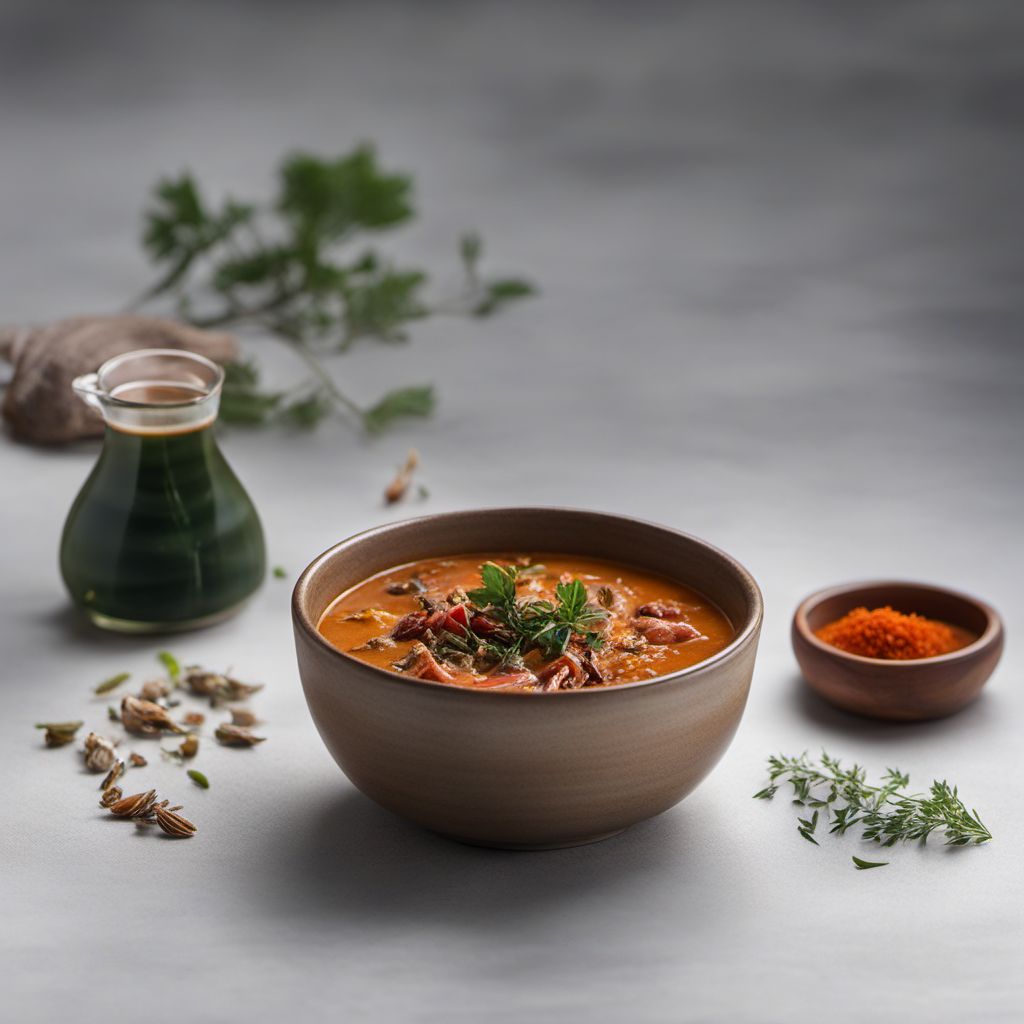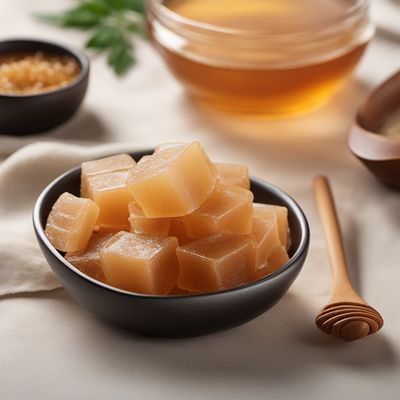
Recipe
Eswatini-style Beondegi Soup
Savory Delight: Eswatini-inspired Beondegi Soup
3.5 out of 5
Indulge in the flavors of Eswatini with this unique twist on the traditional Korean dish, Beondegi Soup. This recipe combines the essence of Eswatini cuisine with the rich and comforting flavors of the original Korean dish.
Metadata
Preparation time
15 minutes
Cooking time
25 minutes
Total time
40 minutes
Yields
4 servings
Preparation difficulty
Easy
Suitable for
Omnivore, Low-carb, High-protein, Gluten-free, Dairy-free
Allergens
Silkworm pupae
Not suitable for
Vegetarian, Vegan, Paleo, Keto, Nut-free
Ingredients
In this Eswatini-inspired adaptation of Beondegi Soup, we incorporate Eswatini spices and herbs to infuse the broth with a distinct flavor profile. Additionally, we use locally available ingredients to enhance the dish's authenticity and adapt it to the Eswatini cuisine. We alse have the original recipe for Beondegi Soup, so you can check it out.
-
2 cups (470ml) water 2 cups (470ml) water
-
1 cup (200g) silkworm pupae 1 cup (200g) silkworm pupae
-
1 onion, finely chopped 1 onion, finely chopped
-
2 cloves of garlic, minced 2 cloves of garlic, minced
-
1 teaspoon ground paprika 1 teaspoon ground paprika
-
1 teaspoon ground cumin 1 teaspoon ground cumin
-
1 teaspoon dried thyme 1 teaspoon dried thyme
-
1 teaspoon dried oregano 1 teaspoon dried oregano
-
1 bay leaf 1 bay leaf
-
Salt and pepper to taste Salt and pepper to taste
Nutrition
- Calories (kcal / KJ): 150 kcal / 628 KJ
- Fat (total, saturated): 5g, 1g
- Carbohydrates (total, sugars): 10g, 2g
- Protein: 15g
- Fiber: 3g
- Salt: 1g
Preparation
-
1.In a large pot, bring the water to a boil.
-
2.Add the silkworm pupae to the boiling water and cook for 5 minutes. Drain and set aside.
-
3.In the same pot, heat some oil and sauté the chopped onion and minced garlic until fragrant.
-
4.Add the cooked silkworm pupae to the pot and stir well.
-
5.Sprinkle the ground paprika, ground cumin, dried thyme, dried oregano, and bay leaf into the pot. Stir to coat the pupae evenly.
-
6.Pour in the water and bring the soup to a simmer. Cook for 15-20 minutes, allowing the flavors to meld together.
-
7.Season with salt and pepper to taste.
-
8.Remove the bay leaf before serving.
Treat your ingredients with care...
- Silkworm pupae — Ensure that the silkworm pupae are thoroughly cooked before adding them to the soup. This will help enhance their texture and flavor.
Tips & Tricks
- If you can't find silkworm pupae, you can substitute them with cooked edamame beans for a similar texture.
- Adjust the spices according to your preference for a milder or spicier flavor.
- Serve the soup with a side of crusty bread or steamed rice for a complete meal.
Serving advice
Serve the Eswatini-style Beondegi Soup hot in individual bowls. Garnish with fresh herbs such as cilantro or parsley for added freshness.
Presentation advice
To enhance the presentation, you can sprinkle a pinch of paprika or cumin on top of each serving. Serve the soup in colorful ceramic bowls to showcase the vibrant colors of the dish.
More recipes...
More Korean cuisine dishes » Browse all

Songpyeon
Songpyeon is a traditional Korean rice cake that is typically filled with sweet or savory ingredients. It is a popular dish during the Korean...

Gochujeon
Gochujeon is a Korean dish made by pan-frying sliced meat coated with a mixture of flour, egg, and seasonings. It is a popular snack or appetizer in Korea.

Dwaeji galbi
Marinated Pork Ribs
Dwaeji galbi is a traditional Korean dish that consists of marinated pork ribs that are grilled or roasted. The dish is typically served with a...








